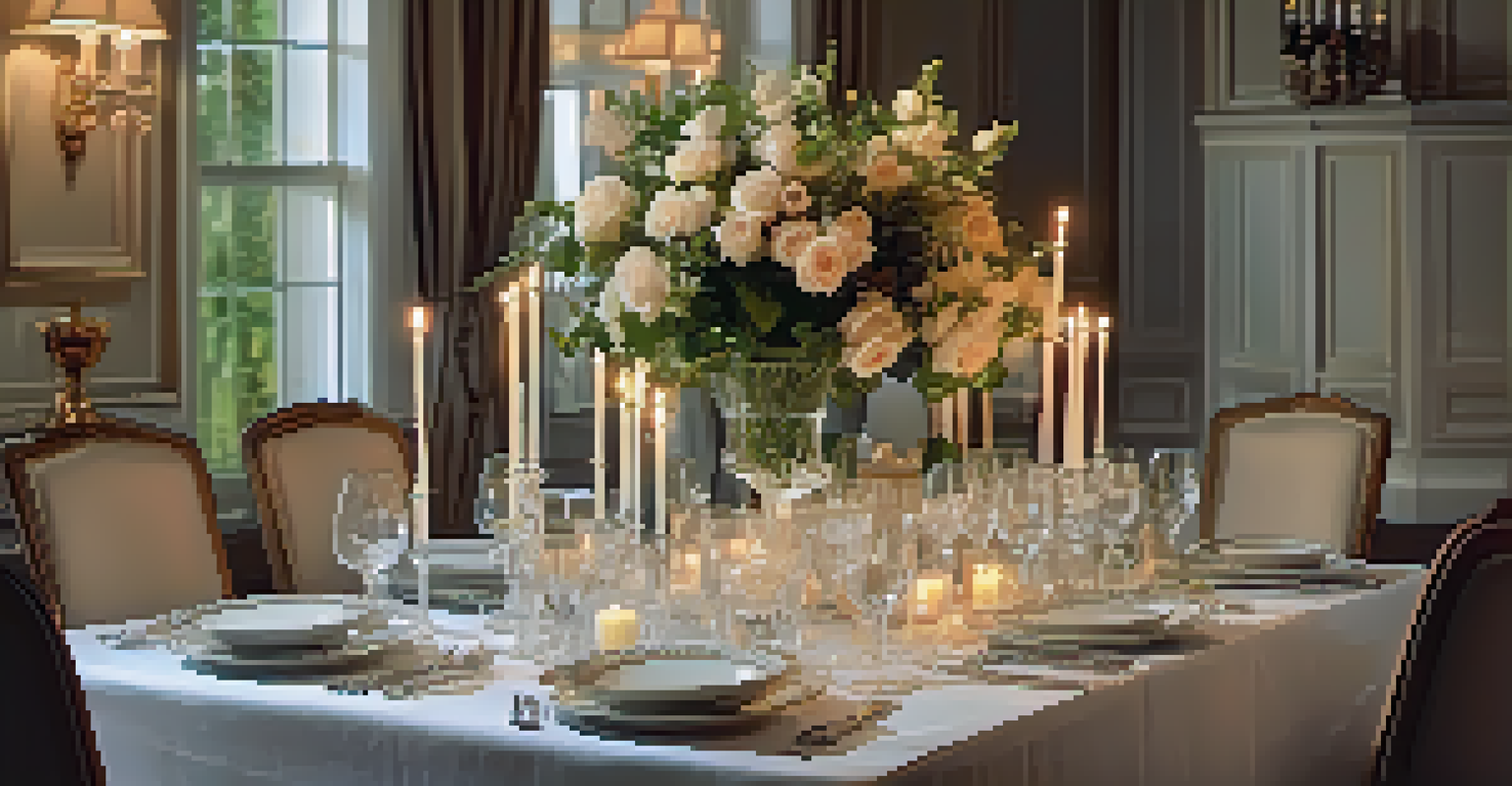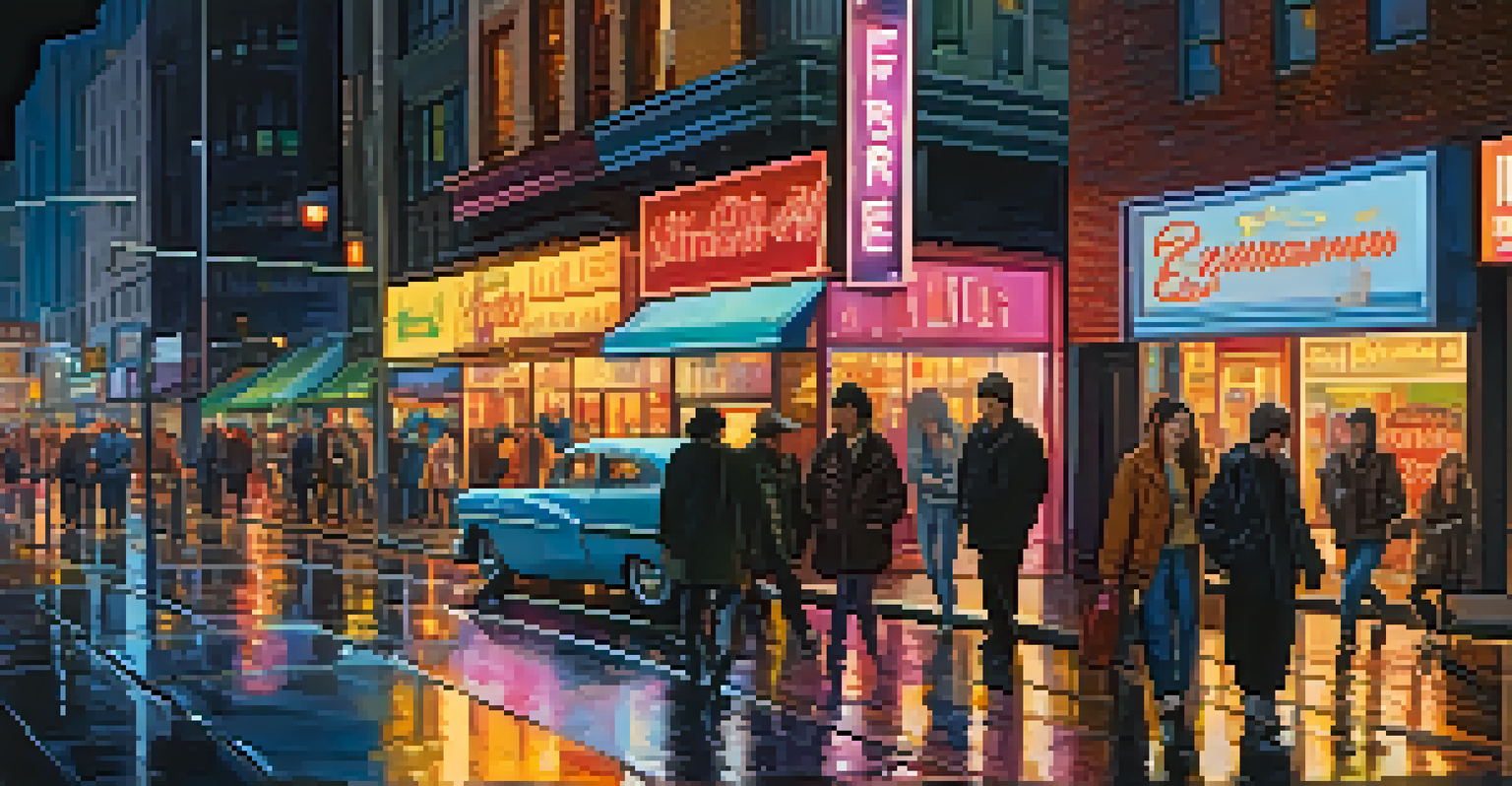How Color Grading Influences Audience Emotional Responses

Understanding Color Grading and Its Purpose
Color grading is the process of adjusting the colors and tones in a film or video to enhance its visual storytelling. It goes beyond simply correcting colors; it's about creating a mood or atmosphere that resonates with the audience. Think of it like an artist choosing specific colors to evoke certain feelings in their painting.
Color is the keyboard, the eyes are the harmonies, the soul is the piano with many strings.
When filmmakers employ color grading, they can manipulate the emotional undertones of a scene. For instance, warm hues like reds and oranges can evoke feelings of warmth, comfort, or passion, while cooler tones like blues and greens may suggest calmness, melancholy, or detachment. This careful selection of colors allows creators to guide viewers' emotional journeys.
Ultimately, color grading is a vital storytelling tool that helps establish a film's identity and tone. It's like the seasoning in a dish—used in the right amounts, it enhances the overall flavor and experience. Without it, even the most compelling narratives can fall flat.
The Psychological Effects of Color on Emotions
Colors have a profound psychological impact on human emotions. For example, studies have shown that the color red can increase feelings of excitement and urgency, while blue tends to calm and relax. This psychological response to color is something filmmakers tap into to elicit specific reactions from their audience.

In the context of film, each color can serve as a cue for the viewer’s emotional state. Imagine a horror film that uses stark contrast with dark shadows and sharp reds to create tension and fear. Conversely, a romantic comedy might feature soft pastels to evoke light-heartedness and joy, making viewers feel uplifted.
Color Grading Enhances Storytelling
Color grading is a vital tool that filmmakers use to adjust colors and tones, creating moods that resonate emotionally with audiences.
By understanding the emotional connotations of colors, filmmakers can craft scenes that resonate deeply with their audiences. This connection between color and emotion is why color grading is not just an aesthetic choice, but a strategic element in filmmaking.
Creating Mood and Atmosphere Through Color Grading
The mood of a film is often established through its color palette. For instance, a gritty, desaturated look might be used in a crime drama to reflect the harsh realities of life, whereas a vibrant, saturated palette can create a sense of whimsy in a fantasy film. Each choice in color grading helps to build the film's world and immerses the audience deeper into it.
Color is an integral part of the world we live in, and it has a profound effect on our emotions and psyche.
Consider the use of color in films like 'Mad Max: Fury Road,' where the warm, dusty tones evoke a sense of desolation and urgency. The color grading here is not merely a choice but a fundamental part of the storytelling that drives home the intensity of the narrative. It's this interplay of color and emotion that keeps viewers engaged.
By thoughtfully applying color grading techniques, filmmakers can transport audiences into the emotional heart of the story. The atmosphere created through color influences how viewers perceive characters, setting, and conflict, making it an indispensable part of visual storytelling.
Color Grading Techniques and Their Emotional Impact
There are several techniques that filmmakers use in color grading to evoke emotions. For example, using a technique called 'teal and orange' grading, where cooler teal shades contrast with warm orange tones, creates a dynamic tension that can enhance action sequences. This blend can elicit excitement and urgency, drawing the audience closer to the action.
Another popular technique is 'color isolation,' where a specific color is highlighted while others are muted. This can be seen in films like 'Schindler's List,' where red is used to symbolize hope amidst despair. This focus directs the viewer's emotional response and highlights key narrative elements, making the experience more impactful.
Colors Influence Viewer Emotions
The psychological effects of colors, such as warm hues evoking comfort or cool tones suggesting calmness, play a crucial role in shaping the emotional responses of viewers.
These techniques demonstrate how intricate and calculated color grading can be in shaping emotional responses. By understanding and applying these methods, filmmakers can create a more engaging and emotionally charged viewing experience.
Case Studies of Effective Color Grading in Film
One of the best examples of effective color grading is found in the film 'The Grand Budapest Hotel.' The vibrant pastel colors and unique color palette create a whimsical yet nostalgic atmosphere, perfectly aligning with the film's quirky story. The color choices enhance the emotional undertones, drawing viewers into a world that feels both surreal and relatable.
Similarly, 'Moonlight' employs a rich color grading technique that reflects the protagonist's emotional journey. The use of deep blues and warm skin tones during pivotal moments evokes a sense of intimacy and vulnerability, allowing viewers to feel the character's struggles and triumphs on a personal level. This is a powerful reminder of how color can serve as a narrative device.
These case studies illustrate the significance of color grading in films. When executed with intention, color grading not only enhances the visual appeal but also deepens the emotional impact, making the audience's experience more memorable.
The Role of Color Grading in Different Genres
Different film genres often utilize color grading in unique ways to enhance their storytelling. For instance, horror films typically employ dark, muted colors to create a sense of dread and suspense, while comedies may lean towards bright, vibrant hues to evoke laughter and joy. Understanding genre conventions is vital for filmmakers to effectively use color grading as a tool for emotional engagement.
In sci-fi films, such as 'Blade Runner 2049,' color grading plays a crucial role in creating a futuristic yet melancholic atmosphere. The use of neon colors juxtaposed with dark shadows enhances the film's themes of isolation and existentialism, shaping how audiences emotionally connect with the characters and their journeys.
Techniques Shape Emotional Impact
Various color grading techniques, like 'teal and orange' grading and 'color isolation,' strategically evoke emotions and enhance the overall viewing experience.
By tailoring color grading techniques to fit the genre's emotional needs, filmmakers can craft a more immersive experience for viewers. This genre-specific approach ensures that the emotional responses align with audience expectations, enhancing the overall storytelling.
Future Trends in Color Grading and Emotional Impact
As technology advances, the future of color grading is poised for exciting developments. Tools like AI and machine learning are beginning to play a role in automating some aspects of color grading, allowing filmmakers to experiment with new styles and techniques. This evolution could lead to even more innovative ways of shaping emotional responses in film.
Moreover, virtual reality (VR) and augmented reality (AR) technologies are opening new avenues for color grading, enabling creators to explore immersive storytelling. Imagine walking through a virtual world where colors shift based on your emotional state or the narrative direction. This could redefine how audiences experience emotion in cinematic storytelling.

These trends highlight the ever-evolving nature of color grading and its impact on storytelling. As filmmakers harness new technologies, the potential to manipulate audience emotions through color will only grow, making it an exciting time for both creators and viewers.